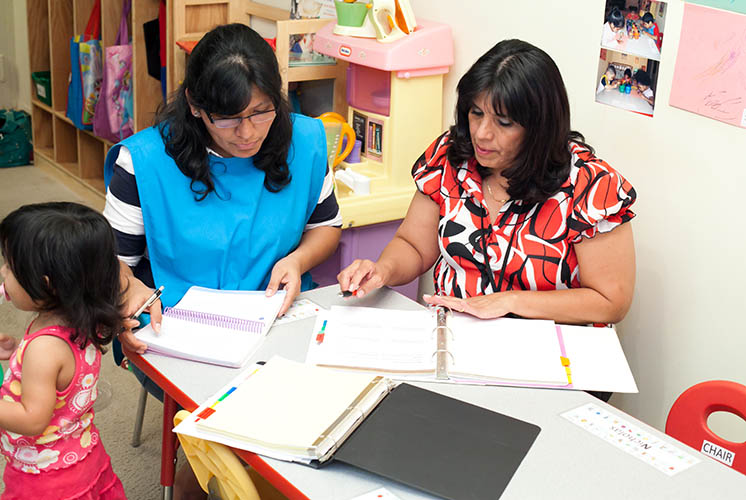 Once teachers, home visitors, and family child care providers have facts about each child, they have to do something with those facts. As part of the ongoing child assessment cycle stage, Aggregate and Analyze,1 education staff review the facts and reflect on what they mean. Staff ask themselves questions about what the information says about children's development, interests, and needs. The answers to these questions lead to individualizing care and the curriculum.
Once teachers, home visitors, and family child care providers have facts about each child, they have to do something with those facts. As part of the ongoing child assessment cycle stage, Aggregate and Analyze,1 education staff review the facts and reflect on what they mean. Staff ask themselves questions about what the information says about children's development, interests, and needs. The answers to these questions lead to individualizing care and the curriculum.
There are many questions that staff may ask themselves. For example:2
- What developmental skill or activity does the child appear to be working on?
- What strategies does the child use to play with different toys?
- Does the child engage with objects or people differently than he or she did a month ago? What has changed? What has not changed?
- Do my actions and the actions of other adults who interact with the child affect the outcomes of the child's experience? How so?
- How does the information relate to goals for the child? The family's goals? The program's school readiness goals?
- What other information do I need?
- What questions do I have for the child's family?
Staff who take time to reflect uncover children's likes and dislikes, what makes the child comfortable or uncomfortable, how the child approaches familiar and unfamiliar tasks and situations, and so on. They begin to see and track trends in children's growth and development.
Although [staff] cannot know for certain what a child is taking away from any given experience, the quality of the child's engagement can be observed and is an indicator of whether or not a particular experience is capturing the child's focus and attention ... Reflecting on the specifics of a child's experience contributes to a deeper understanding of [the child's] developmental process, leading to a more customized, individualized curriculum.3
It is during the reflective process that interpreting the meaning of children's behaviors and interactions becomes important. These interpretations and insights give rise to each child's story. Each child's story informs responsive practice.
Jennifer, 4 months old and new to the program, seemed to use the same high-pitched intense cry for everything. We had difficulty figuring out what she wanted. Sleep? Food? Comfort? A pacifier wouldn't help; Jennifer didn't use one. Jennifer's parents mentioned they were having a hard time establishing a regular napping or feeding schedule. They were also finding it difficult to understand what their baby was trying to communicate.
Frankly, we were at a loss. We started viewing Jennifer as a "difficult child," but we knew there had to be something more to it than that. So, we made a plan with Jennifer's parents. We started to watch her closely and keep detailed observation notes. We even videotaped her. Jennifer's parents watched her closely, too, and shared their observations during drop-off and pick-up times.
After about two weeks of observing, trying various strategies, and sharing information back and forth, we began to notice subtle differences in her crying and body movements. With Jennifer's parents, we started to figure out what Jennifer's cries and movements meant and respond accordingly. Jennifer's crying jags began to lessen as we learned what she needed and when she needed it. This experience really made us believers in observation!
Families remain an important source of information during the reflection process. They can answer questions and help staff interpret what children's behaviors and interactions might mean as well. They can continue to share what they have observed at home and will often be able to share the strategies that work for them.
1Office of Head Start, Ongoing Child Assessment: A Guide for Program Leaders.
2National Infant & Toddler Child Care Initiative, Infant/Toddler Curriculum, 21.
3Ibid.
Read more:
Resource Type: Article
National Centers: Early Childhood Development, Teaching and Learning
Last Updated: August 10, 2023
